Long Range
Motion Sensor
By: Dave JohnsonSome time ago I bought an
infrared LED flood lamp. As shown below, this thing has 140 infrared LEDs.
It is powered by a 24v DC supply and was originally designed as a nighttime security
camera illuminator. Black and white security cameras are most sensitive to
infrared light, which is invisible to human eyes. |
 |
|
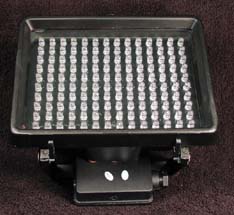 |
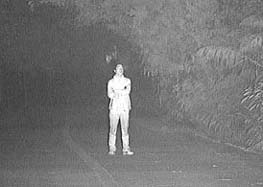 |
| I often
wondered if this kind of light source could be used to make a long range
motion sensor. As outlined in the block diagram below, here is how
it would work. The large LED array would be modulated (turned on and
off) at a medium frequency, such as 40KHz. A large area light sensor
(perhaps 1cm x 1cm) positioned off to the side of this illuminator would
collect some of the light reflected from objects, going out to perhaps 100
feet away. The light detector would be connected to first a current
to voltage converter then to a narrow bandpass filter, which would
concentrate only on the 40KHz signal. Using this technique, the
circuit would be immune to ambient light variations. The Amplitude
of the received 40KHz signal would be converted to a DC voltage, using a
rectifier circuit. The changes in that voltage would then be
Amplified. Finally, the Amplitude change signal would be connected
to a voltage comparator, whose reference voltage could be made adjustable.
Any object, such as a vehicle or a human, moving into the field of view
would change the Amplitude of the received signal. To enhance the
Amplitude changes, bicycle reflectors and reflective strips could be
scattered about in front of the illuminator. These would produce
large changes in the reflected light signal, as the object moved in front
of the reflectors. The experiment would be to see if this concept
could be made to work. |
|
 |
| Iím sure this
concept would work indoors and but I think it would only work outdoors in
areas which do not have a lot of vegetation. I would think that high
winds would certainly cause problems as trees and bushes moved in the
wind. But, when pointing the system at hard surfaces, like a parking lot
or a loading dock, the method should work. |
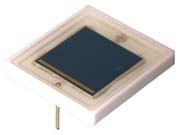 |
To reach
out and detect motion out to 100 feet or more, a spherical lens
could be positioned in front of the bare silicon photodiode.
As shown below, a 2 inch diameter lens would gather about 20 times
more light than a bare photodiode. Based on the inverse square
law, that should increase the range by a factor or 4X. |
| 1cm x 1cm Silicon
Photodiode |
|
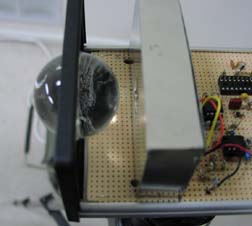 |
The infrared motions sensing system could be tied into a security
camera. When the motion sensor detected motion, the camera
would be switched on, capturing images or even movies of the object.
Another thought
is to use some of the latest 5 watt infrared power LEDs. Just
one of these devices would replace the whole array of 140 smaller
LEDs. Also, the light pattern could be shaped for a wide area
flood or a narrow spot, using some plastic flashlight type
reflectors. |
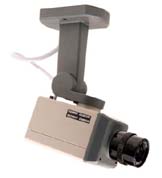 |
| Glass Spherical Lens |
|
Security Camera |
|
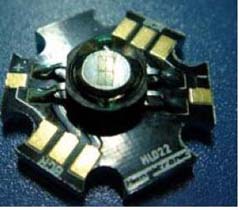 |
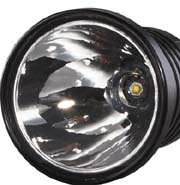 |
| 5
Watt IR LED |
Power LED with Reflector |
|
|
|
|